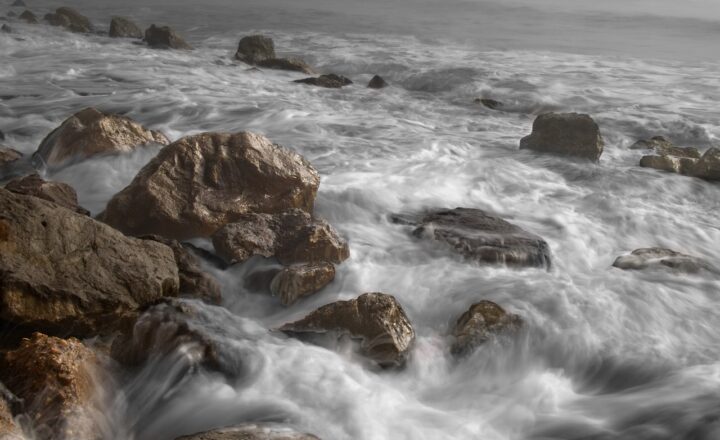
Ocean trenches, the deep and often mysterious regions of our planet’s oceans, represent one of the least explored and most intriguing environments on Earth. They are not only critical to the health of the ocean but also house unique ecosystems that sustain a diverse range of life forms. In this article, we will delve into the formation, importance, and unique characteristics of ocean trenches and the ecosystems they support.
1. Understanding Ocean Trenches
Ocean trenches are steep depressions in the ocean floor that are formed by the process of plate tectonics. As the Earth’s tectonic plates collide, one plate can subduct under another, creating a deep trench. These trenches can reach incredible depths; the Mariana Trench, the deepest known trench, plunges over 36,000 feet (almost 11,000 meters) into the Pacific Ocean.
1.1 Major Ocean Trenches
Some of the most notable ocean trenches include:
- Mariana Trench: Located in the Western Pacific, it is the deepest oceanic trench in the world.
- Tonga Trench: This trench is located in the South Pacific and is the second deepest trench.
- Philippine Trench: It lies to the east of the Philippines and features remarkable biodiversity.
- Java Trench: Also known as the Sunda Trench, it is located in the Indian Ocean.
2. The Importance of Ocean Trenches
Ocean trenches play a vital role in the Earth’s environment and ecology. Here’s why they are significant:
2.1 Carbon Cycle Regulation
Ocean trenches act as a natural means of carbon sequestration. When organic matter sinks into these depths, it decomposes slowly, storing carbon over long periods, which helps regulate global climate and carbon cycles.
2.2 Geological Activity
Trenches are also hotspots of geological activity, contributing to the formation of undersea volcanoes and earthquakes. The Pacific Ring of Fire, a zone of high seismic activity, is largely influenced by these trenches.
2.3 Biodiversity Hotspots
Despite their extreme conditions, ocean trenches are home to a plethora of unique life forms, many of which are not found anywhere else in the world. The extreme pressure, cold temperatures, and absence of sunlight have led to the evolution of special adaptations amongst these organisms.
3. Unique Ecosystems of Ocean Trenches
The ecosystems found within ocean trenches are fascinating, characterized by extreme conditions and biological diversity. Here are some of the key features:
3.1 Extreme Conditions and Adaptations
Creatures living in trenches have developed unique adaptations to survive:
- Bioluminescence: Many organisms, such as anglerfish and certain jellyfish, produce their own light to attract prey or communicate in the dark depths.
- Gigantism: Some species, like the giant squid, have evolved into much larger forms than their shallow-water relatives.
- Specialized Metabolism: Many trench-dwelling organisms rely on chemosynthesis instead of photosynthesis, obtaining energy from chemicals released through hydrothermal vents.
3.2 Notable Species
Some interesting species found in trench ecosystems include:
- Deep-Sea Anglerfish: Known for their luminescent lure used to attract prey.
- Giant Squid: A legendary creature that has captured the human imagination.
- Hydrothermal Vent Life: Communities of tube worms, clams, and bacteria flourish around hydrothermal vents, showcasing an extreme ecosystem.
4. Threats Facing Ocean Trenches
Despite their remoteness, ocean trenches are not immune to human impact. The following threats pose risks to these vital ecosystems:
4.1 Deep-Sea Mining
Minerals and rare earth elements are becoming increasingly sought after from deep-sea environments, including ocean trenches, which can disrupt delicate ecosystems and biodiversity.
4.2 Pollution
Plastic waste and other pollutants can find their way into even the deepest parts of the ocean, damaging marine life and ecosystems.
4.3 Climate Change
Rising ocean temperatures and acidification affect the chemical composition of seawater, jeopardizing the life forms that are vital to trench ecosystems.
5. The Future of Ocean Trenches
Understanding ocean trenches is critical for conservation efforts and managing the resources they provide. Here are some steps we can take to ensure that these unique ecosystems are preserved:
- Establishing Protected Areas: By creating marine protected areas, we can minimize human impact and conserve species that inhabit these trenches.
- Sustainable Practices: Promoting responsible resource extraction practices can help protect these environments.
- Scientific Research: Continued exploration and research can lead to better understanding and conservation strategies for trench ecosystems.
Conclusion
Ocean trenches are fascinating, complex ecosystems that deserve greater attention and protection. They play essential roles in our planet’s carbon cycle, geological activity, and support bizarre and unique life forms that have adapted to extreme conditions. Protecting these underwater regions is vital for sustaining biodiversity and ensuring the overall health of our oceans. By fostering awareness and conservation efforts, we can help secure the future of ocean trenches and the remarkable species that call them home.






